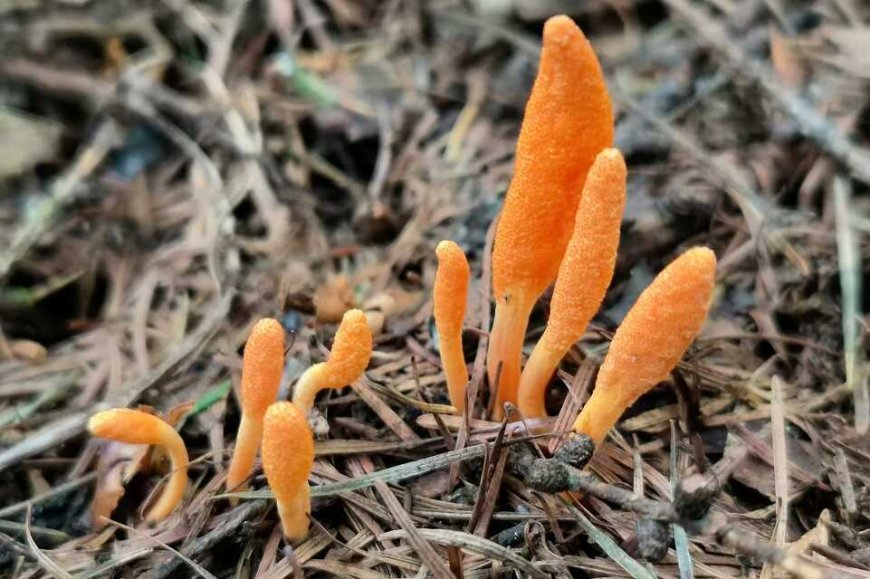Fungus Boosts Caterpillars' Eating Habits to Help with Fruiting
A study by the Chinese Academy of Sciences reveals how Cordyceps militaris fungus infecting silkworm larvae enhances caterpillar feeding and weight gain, benefiting fungal fruiting on pupae. The research sheds light on the manipulation of insect behaviors by fungal parasites.

Locusts or grasshoppers infected by Entomophaga grylli causes the diseased insects climbing to plant tops before death. The zombie-ant fungus Ophiocordyceps unilateralis infects ants and controls their behaviors to benefit fungal transmission. This type of parasite-manipulated host behaviors is called an extended phenotype.
It is interesting but enigmatic that the entomopathogenic fungus Cordyceps militaris (C. militaris) infects caterpillar larvae but does not kill them until after they develop into fatty pupae. The caterpillar fungus Ophiocordyceps sinensis is also slow in killing insects. It is unclear whether these fungi can control insect behaviors following infections like other parasites.
In a study published in Current Biology, researchers from the Center for Excellence in Molecular Plant Sciences of the Chinese Academy of Sciences and the collaborators reported that C. militaris infecting silkworm larvae promotes caterpillar feeding and weight gain, which benefits fungal fruiting on fatty and more nutritious pupae.
By mimicking the natural condition, the 4th instar silkworm larvae infected with a low dosage of C. militaris spores could fully develop to pupal stage. After infection, caterpillar feeding was significantly promoted, and the weights of mature larvae and pupae increased. Interestingly, fungal infection led to the constant upregulation of the silkworm orexigenic neuropeptide gene HemaP.
After gene synthesis and engineering C. militaris with HemaP, the engineered fungal strains further enhanced silkworm feeding and weight gain compared with the mock control. In contrast, the deletion of HemaP in silkworms substantially reduced insect feeding and body weight, and therefore the production of fungal fruiting bodies on mutant pupae decreased.
Further investigations revealed that C. militaris infection resulted in the starvation-like sharp reduction of silkworm hemolymph sugars, both glucose and trehalose. The latter is the major storage blood sugar in insects. Interestingly, an insect-like secreted trehalase CmTreH1, the catalytic enzyme of trehalose, was found to be highly expressed by the fungus during its growth in silkworm body cavity.
Phylogeny and gene codon adaptation index analyses suggested that CmTreH1 is potentially acquired from insect hosts to better play a molecular mimicry function in insects. Besides, fungal infection was found to induce the upregulation of silkworm trehalases, insulin-like genes and trehalose biosynthetic genes.
The deletion of CmTreH1 in C. militaris and the use of fungal mutants for infection of silkworm larvae failed to promote caterpillar feeding and weight gain. The results revealed that fungal insect-like trehalase but not the induction of insect trehalases determines fungal manipulation of insect feeding behavior.
This work reports the first eukaryotic parasite's selfish gene in controlling extended phenotypes in caterpillars. The manipulation of the host feeding behavior is a new type of extended phenotypes controlled by a fungal parasite that has not been suspected before. The data from this work may benefit the cost-effective use of silkworms for the mass production of this highly-valued fungus.
According to the source: Mirage News.
What's Your Reaction?
 Like
0
Like
0
 Dislike
0
Dislike
0
 Love
0
Love
0
 Funny
0
Funny
0
 Angry
0
Angry
0
 Sad
0
Sad
0
 Wow
0
Wow
0
















































































































































